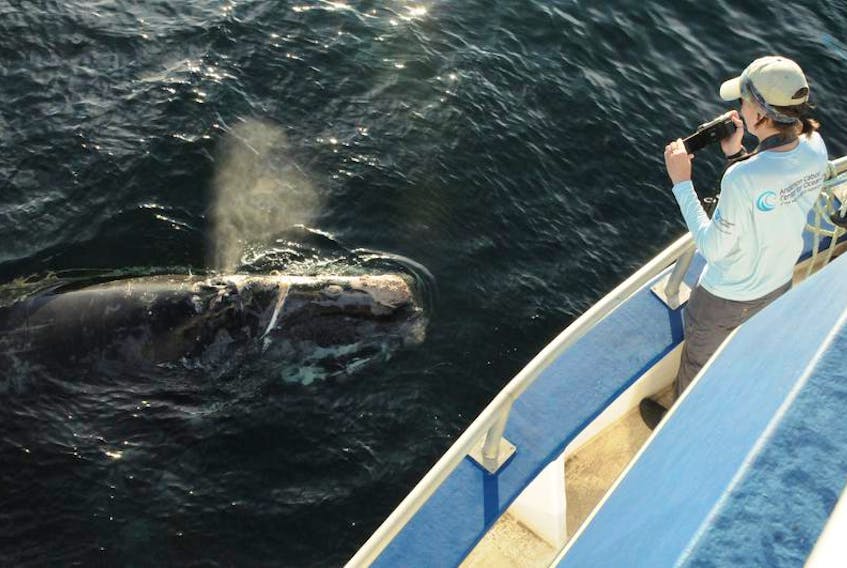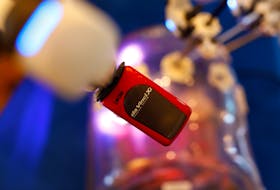HALIFAX, N.S. - The whales knew they were there.
Scientists had to follow the right whales to find the fatty copepods — crustaceans from two to five millimetres long — in the trillions between Prince Edward Island and northern New Brunswick.
It appears that when warming waters or changing currents, or both, made the creatures scarce in traditional feeding grounds in the Bay of Fundy, the rights whales knew to go north in search of a meal.
But there they ran also ran into a lucrative crab fishery.
Last year 12 of the endangered whales were killed in the Gulf of St. Lawrence, mainly through vessel strikes and entanglement in fishing gear.
The snow crab fishery had its Marine Stewardship Council sustainability label revoked.
Enforcement and scientists responded en masse this fishing season — shutting large areas of the Gulf to fishing as everyone tried to figure out what’s going on and most importantly whether humans and right whales can operate side by side.
“It’s about mitigating risk,” Kim Davies, a research associate at Dalhousie University, said.
We know what we’re doing on the Gulf of St. Lawrence.
But we need to know what the whales are doing while coming up to gorge themselves on billions of the copepods daily.
To get a snapshot of two days in the life of the whales required a lot of teamwork.
On July 30 a Canadian Forces Aurora long range patrol aircraft dropped 32 sonobuoys usually used to listen for submarines in a grid over a 1,500-square-kilometre area of the Gulf of St. Lawrence.
Meanwhile, scientists from the Northeast Fisheries Science Center spotted whales surfacing from an American National Oceanic and Atmospheric Administration plane.
On the water a team from Dalhousie, including Davies, attempted to identify individual right whales while also trawling for copepods to measure their density in the water.
Below the surface two autonomous Slocum gliders listened for whales and recorded sea surface temperatures — passing the information on to scientists in real time.
Meanwhile satellite images were taken of the entire area from space.
“This dataset is entirely novel; we’ve never had so many monitoring technologies overlapping in the same time and place,” said Hansen Johnson, a PhD candidate working on the Whale Habitat and Listening Experiment.
“I’m hopeful that the many facets of this dataset will provide us with new insights that lead to improved monitoring and conservation outcomes for this endangered species.”
While the data will go to many uses, one practical use was testing the listening capacity of the gliders against the sonobuoys.
With the buoys listening to all 30 of the whales that were feeding in the area being monitored that day, scientists will be able to break down how big a swath of the ocean the glider’s hydrophone covers.
Eventually gliders swimming through the Gulf could warn fisherman and captains transiting the area when whales are nearby and what they’re up to.
The gliders, driven by a variable buoyancy system, can stay roaming the sea for four months at a time.
While mitigating risk — whether it be by warning captains to avoid whales or the anticipated introduction of ropeless fishing gear over coming years — will be part of the solution, big questions remain for the future of the right whale.
“The last several years there has been a decline in calving,” said Davies.
“To have enough energy to lactate females need to consume huge quantities of copepods, in the billions. Potentially one of reasons we’re not seeing calving is due to the females not getting enough food to carry a pregnancy successfully.”
This year no calves were spotted.
And while there is food for the picky whales — they only target two varieties of copepods — in the Gulf’s Orpheline Trough, we don’t know if they’re getting enough.
Or if the long swim north drains too much of the energy they need to calve.
“It takes times,” said Davies of research.
Which raises another question — how much time does the declining species have?









